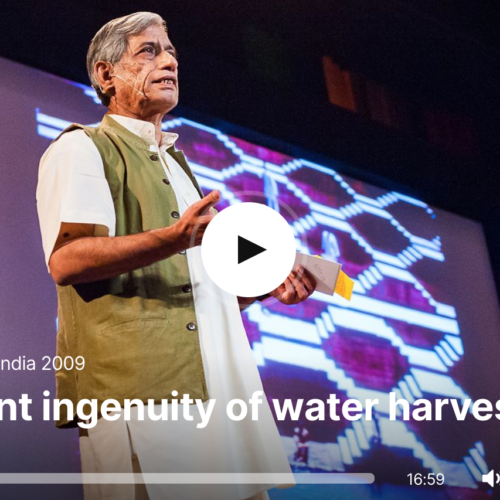
Traditional Indian Water Harvesting
Traditional Indian Water Harvesting Techniques show efficient use of water resources that rival and sometimes surpass contemporary techniques. In a recent TED talk, Anupam Mishra discussed rural India’s traditional rainwater harvesting techniques. Anupam Mishra is a water conservationist and expert on traditional rainwater harvesting and water resource techniques.
The ancient ingenuity of water harvesting helped rural Indian populations survive in areas with limited rainfall and ground water resources that are either too deep to access or saline and therefore unable to be used as drinking water.
Ancient aqueducts and stepwells in rural India are still used today and are often superior to modern water megaprojects in their ability to recharge and store the limited amount of water resources available. Many of these structures are beautiful as well as functional. Statues and patterns built into the structures indicate water levels.
The goal of each system is to waste absolutely no water. This is achieved through the partnership of private, public, and state relationships when implementing techniques. For example, each resident is committed to contributing to the capture of water resources by collecting rainwater on every roof of every structure.
Anupam Mishra says the secret to the success of these systems is respect. Concept development, project planning, construction, and maintenance are all done across multiple generations.
He ends his talk by saying, “if it can be done then, it can be done now.”
Tradition and Innovation
OEI has a tradition of excellent water resource management services dating back to the 1980s. We honor engineering traditions and examples while pursuing new knowledge about industry standards and practices. By combining tradition and new technology we can rehabilitate decaying water resource structures while making them sustainable for future generations. By learning about successful techniques of the past we can apply them to create better techniques for the future.
